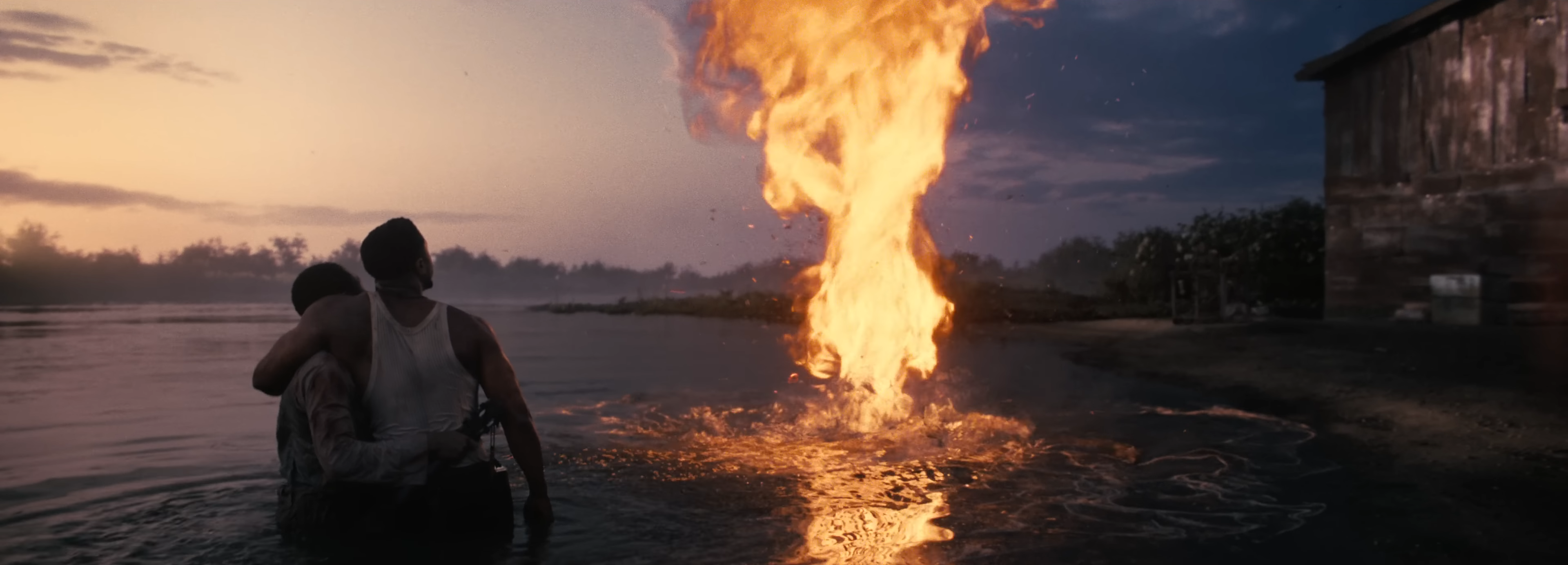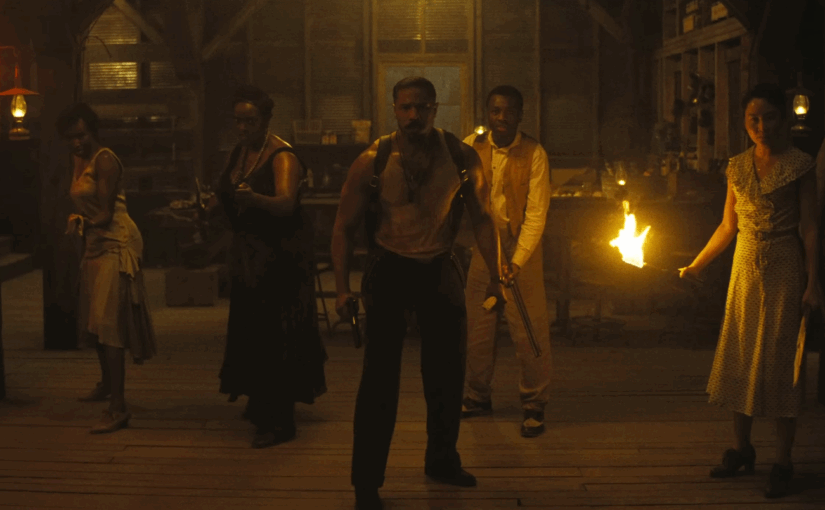Ryan Coogler | 2hr 17min

Music is a supernatural force that can pierce the veil between life and death, we are told in the opening minutes of Sinners, and on the local juke joint’s opening night it is apparent that the local preacher’s boy is specially ordained to make that mystical connection. This Southern Gothic tale is deeply infused with the spirit of blues, thrumming with vibrant, soulful twang of guitars, but as Sammie takes the stage and rouses the crowd, we also witness a cosmic revolution unfold.
No longer is this bar simply a place for African Americans of 1930s Mississippi Delta to dance, drink, and party with their people. It transcends time itself, beginning with an electric guitarist joining the bluesy vocals and reverberating acoustic instruments, before pulling back to reveal a DJ dropping hip-hop beats. Still Ryan Coogler’s camera continues to fly around the joint as Sammie’s act summons spirits of the past and future, integrating tribal drumming with hip-hop and ragtime, while Crip Walks and masked Zaouli dancers fill the space with anachronistic energy. This may be a celebration of Black music from across history, but the Beijing Opera performers who join Chinese couple Bo and Grace suggest an even broader appreciation of cultural expression, folding in its many forms upon a single, eternal moment.
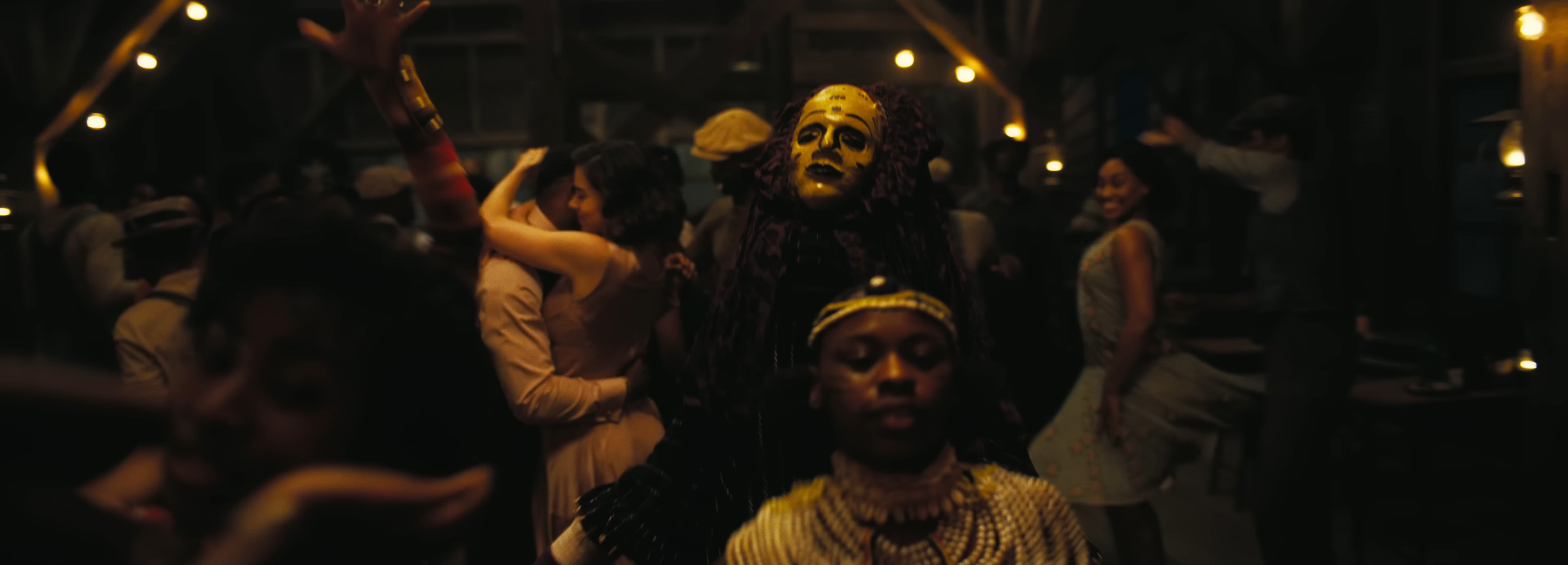
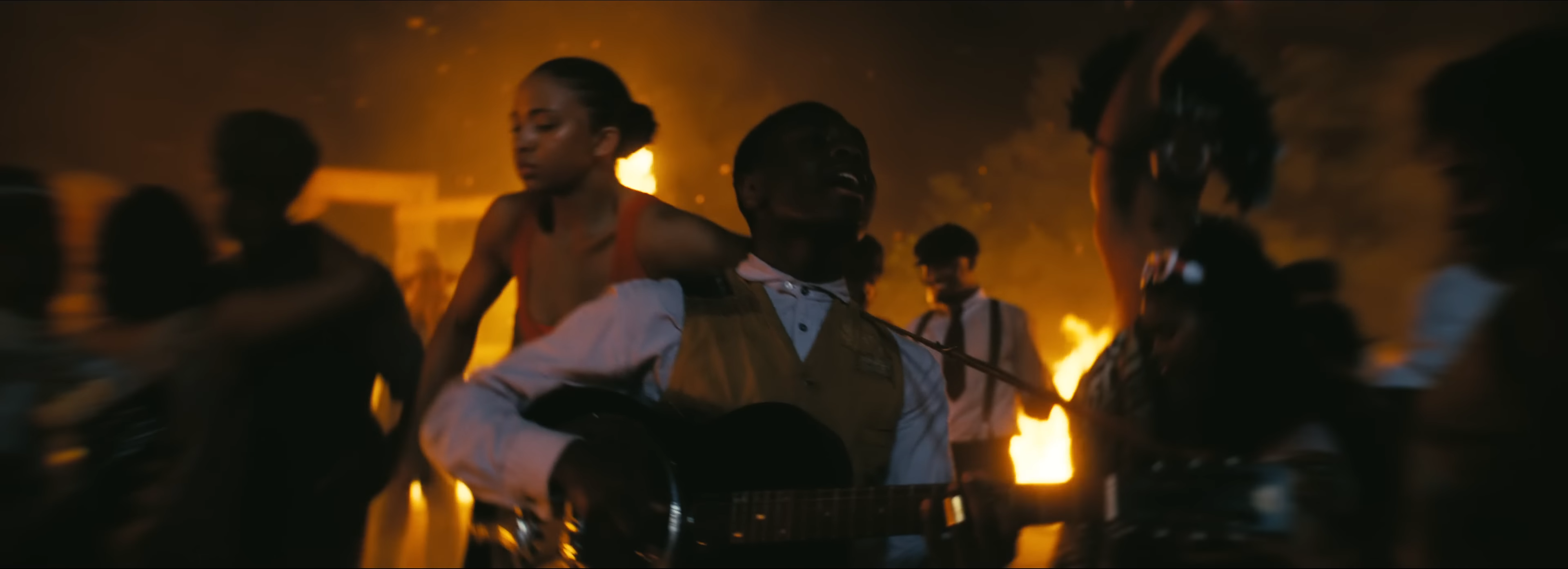
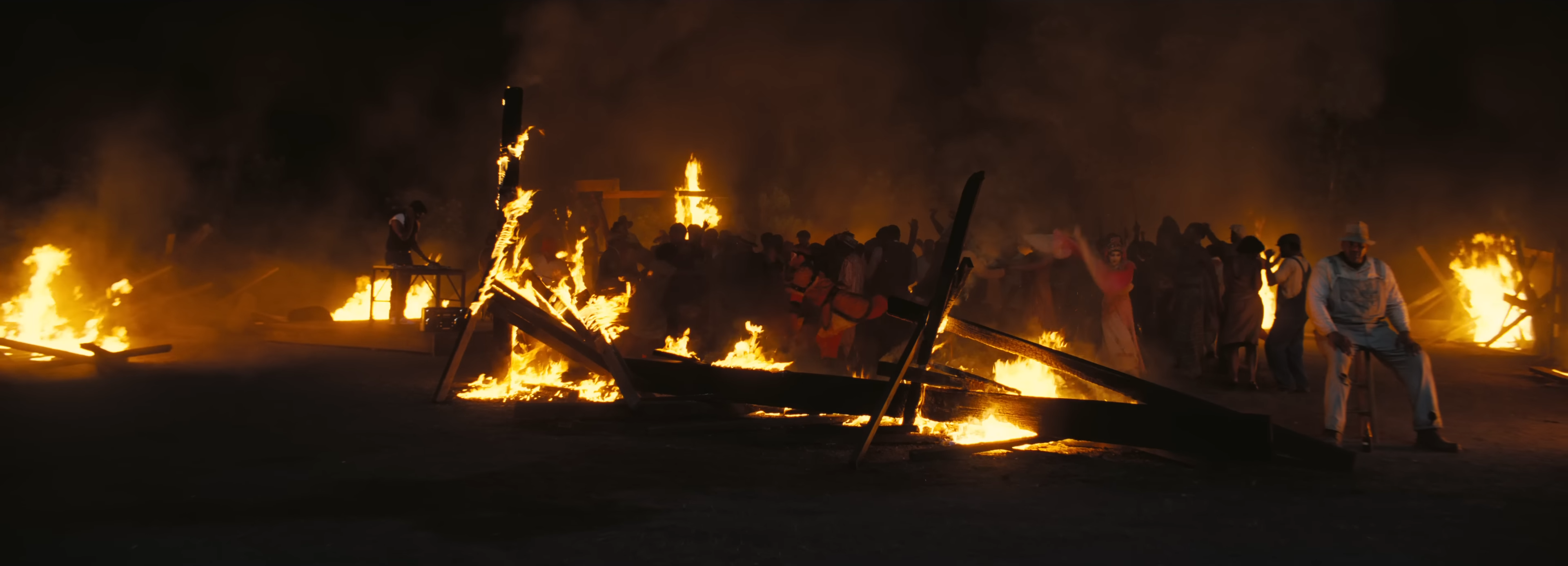
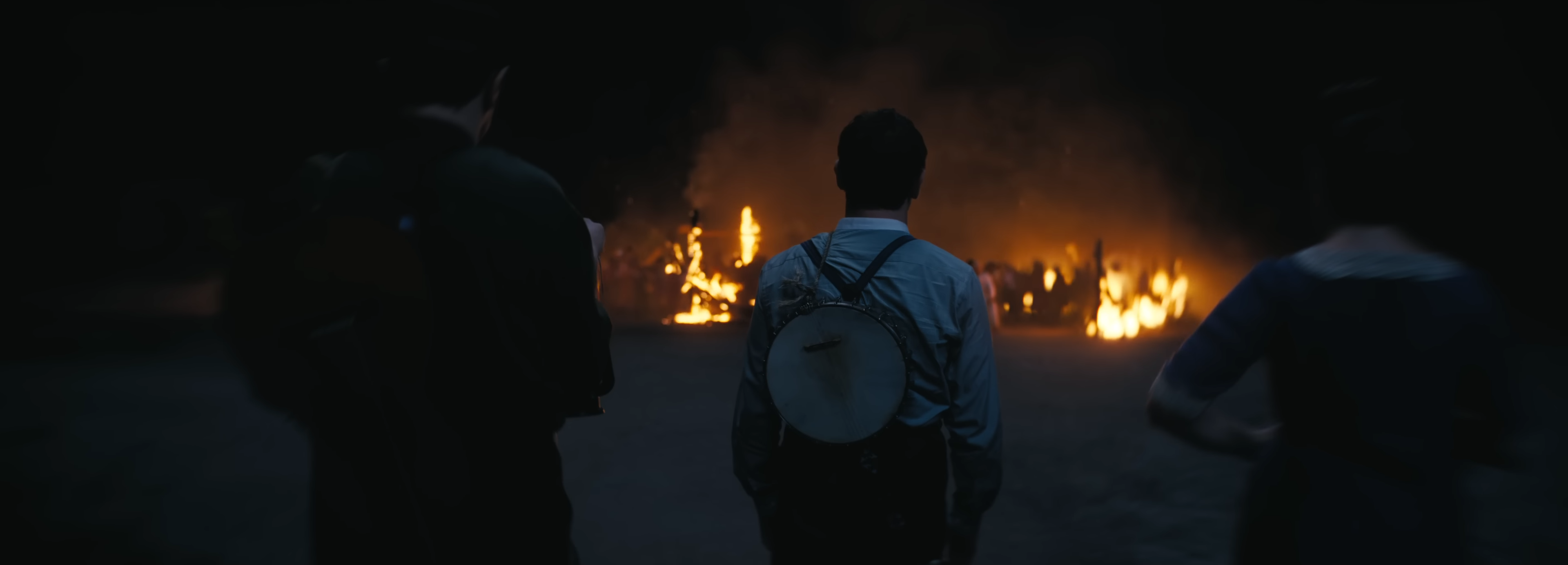
It is no wonder why vampire Remmick longs to exploit Sammie’s mystical power to reawaken departed ancestors. Sinners remains relatively faithful to traditional vampire lore, depicting them as predatory creatures who have disrupted the natural course of life and death, while a brief glimpse of Native American hunters hints at a larger battle between spiritual forces at play. Just as these creatures have lost their humanity, Remmick has grown distant from his Irish origins during his time in America, making the purity of expression he witnesses in Sammie’s musical ability all the more awe-inspiring. Assimilation was the cost of freedom for Remmick’s people, and now as he seeks to similarly absorb Sammie’s community, Sinners’ most remarkable metaphor takes chilling form. Subsumed in another collective, these undead monsters lose the sun, their souls, and their culture – but if this assimilation also guarantees African Americans an escape from prejudice, could it possibly be a fair trade?
Coogler has certainly proven his hand at directing and elevating franchise films over the years, though it is no surprise that his first truly original story also marks his finest achievement to date, giving him a platform to explore his most eclectic artistic interests. Michael B. Jordan remains reliably by his side, cast in his most impressive role to date as twins Smoke and Stack who ran from the gangs of Chicago, and have now returned to their hometown in the Mississippi Delta. Jim Crow racism is rampant in the South, but it is better to deal with the devil they know, the brothers reason, not yet grasping the true depth of its inhuman evil.
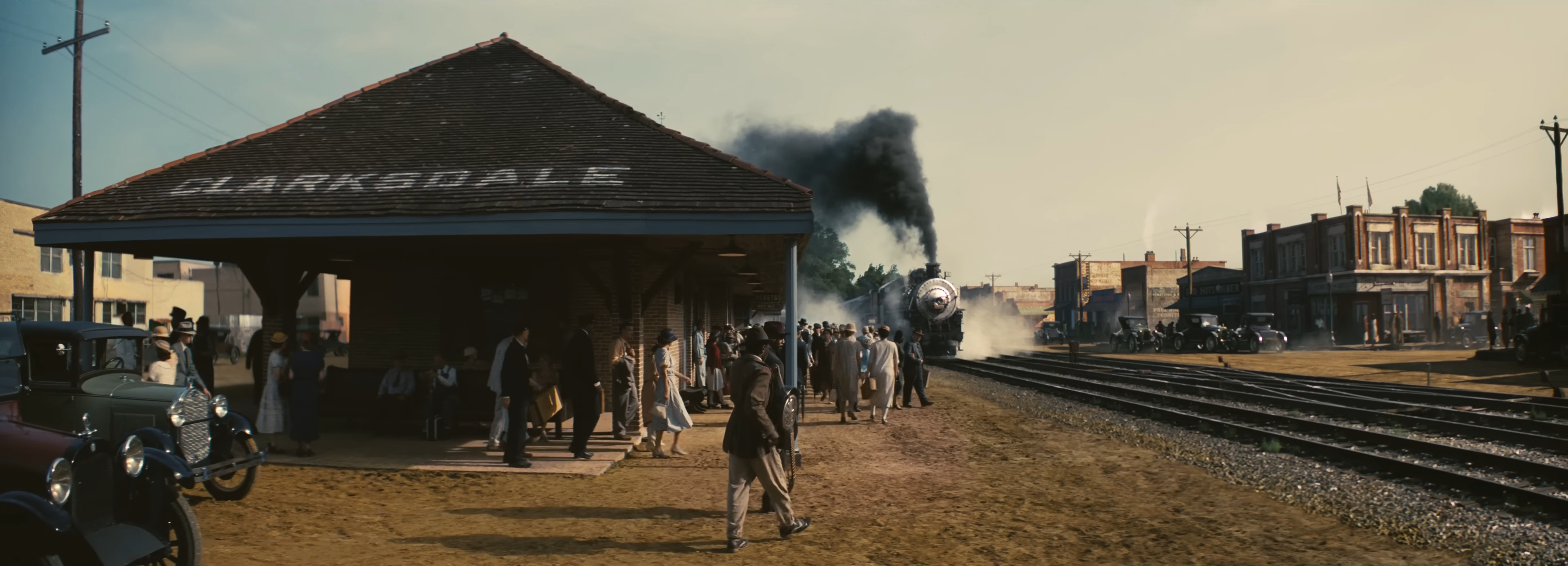
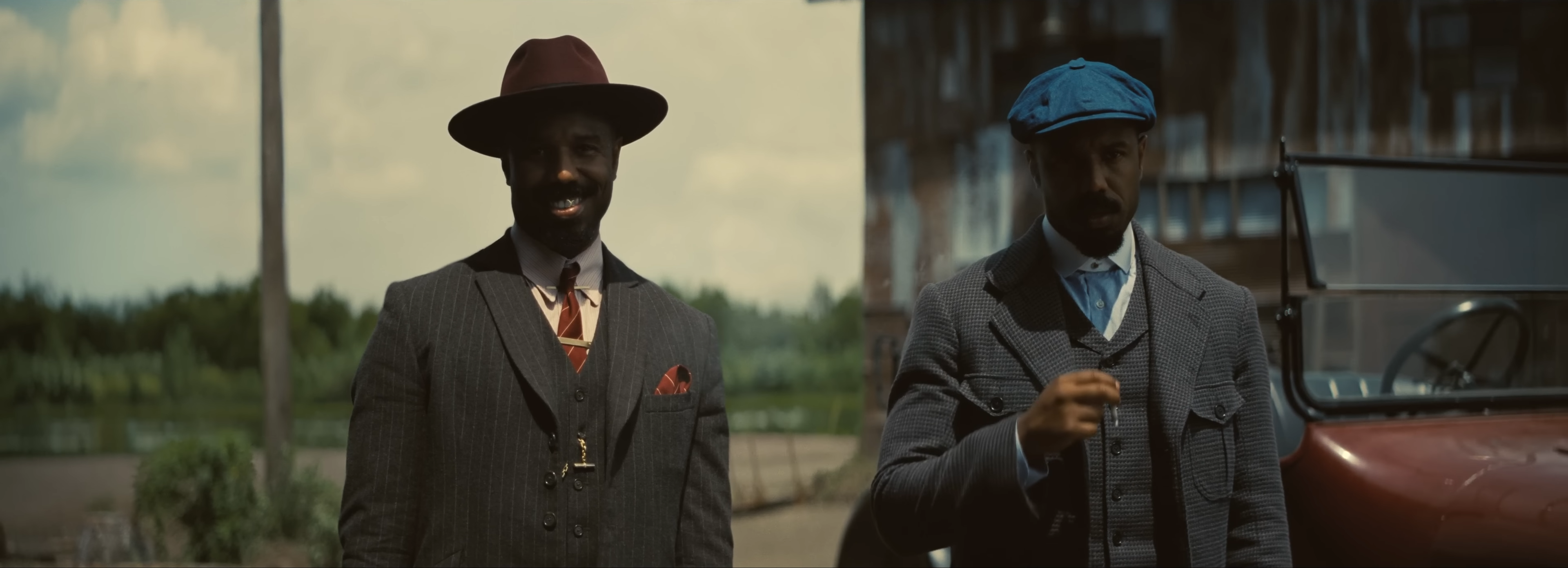
The juke joint that Smoke and Stack intend to open is an opportunity for them to assemble old friends, family, and lovers, and Coogler is patient with the introduction of each, building out his ensemble with depth and vitality. Hailee Steinfeld plays Stack’s old flame Mary with subtle internal conflict, uncertain of her place as a one-eighth Black woman who passes as white, and drawing parallels with Bo and Grace whose outsider status similarly ally them with the African American community. Weathered pianist Delta Slim, discerning occultist Annie, and loyal field worker Cornbread continue to round out the supporting players here, so that by the time bodies start dropping and rising from the dead, the stakes of losing these characters are agonisingly high.
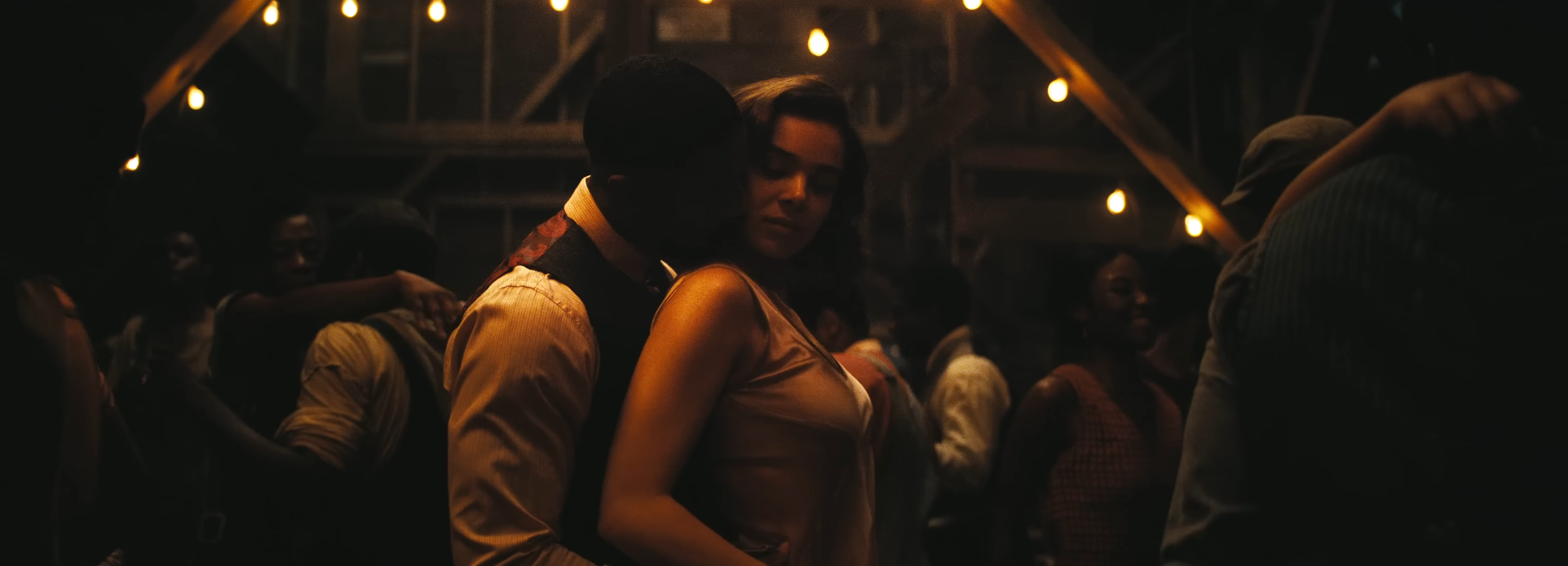
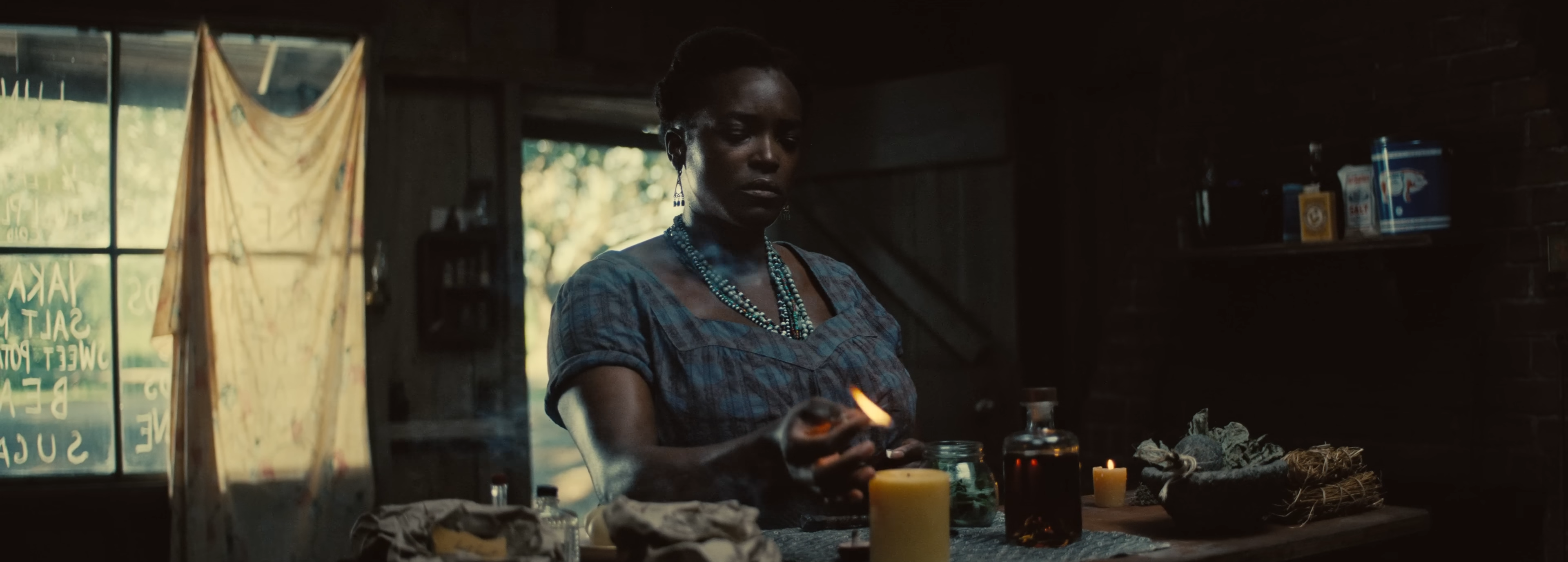

The structural similarities that Sinners bears to From Dusk Till Dawn are notable, dividing the film in distinct halves that separate the drama from the bloody horror, though Coogler’s narrative goes down far smoother than Robert Rodriguez’s unevenly plotted spectacle. The prologue lands us in the immediate aftermath of the carnage, hinting at the imminent terror through smash cuts to single-frame flashbacks, and promising us that it will all be worth the wait – not that we need such a guarantee with characters this compelling. If there is any cinematic setback in the first act, it is those stretches of stylistic inactivity behind the camera, but the gorgeous period décor and natural light which permeates Coogler’s scenery nevertheless imbues this slow-burn setup with an enchanting effervescence.
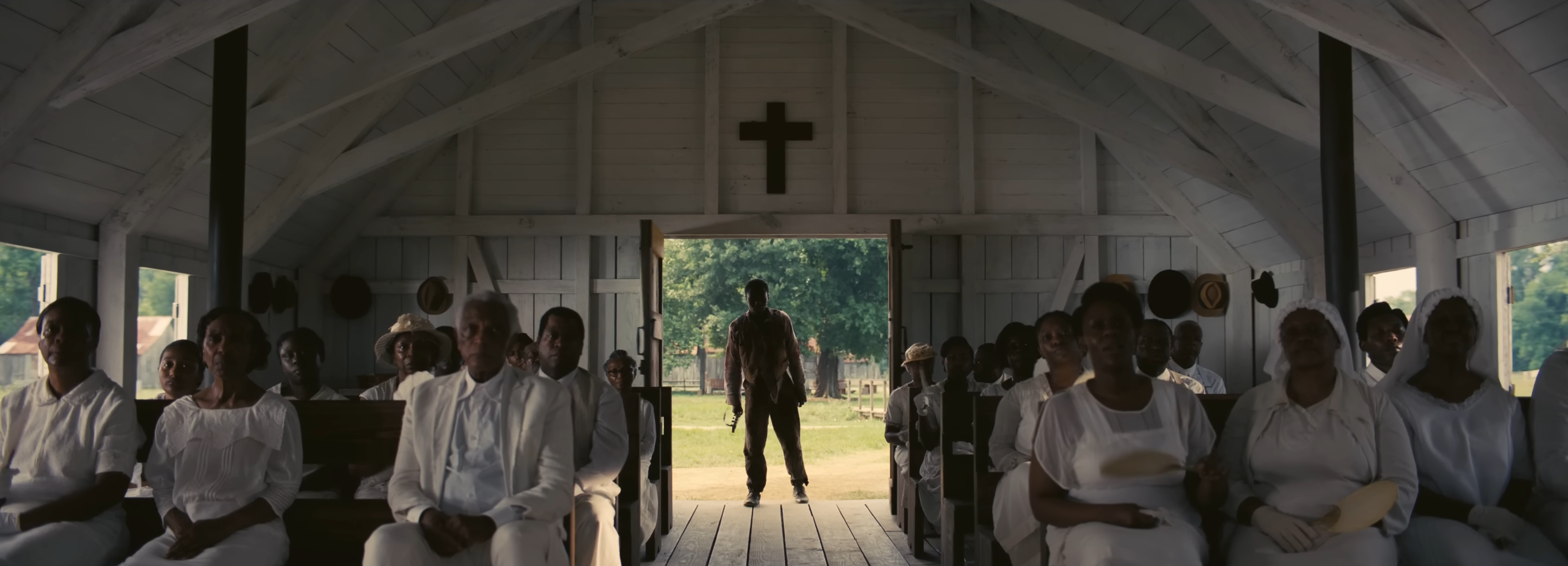
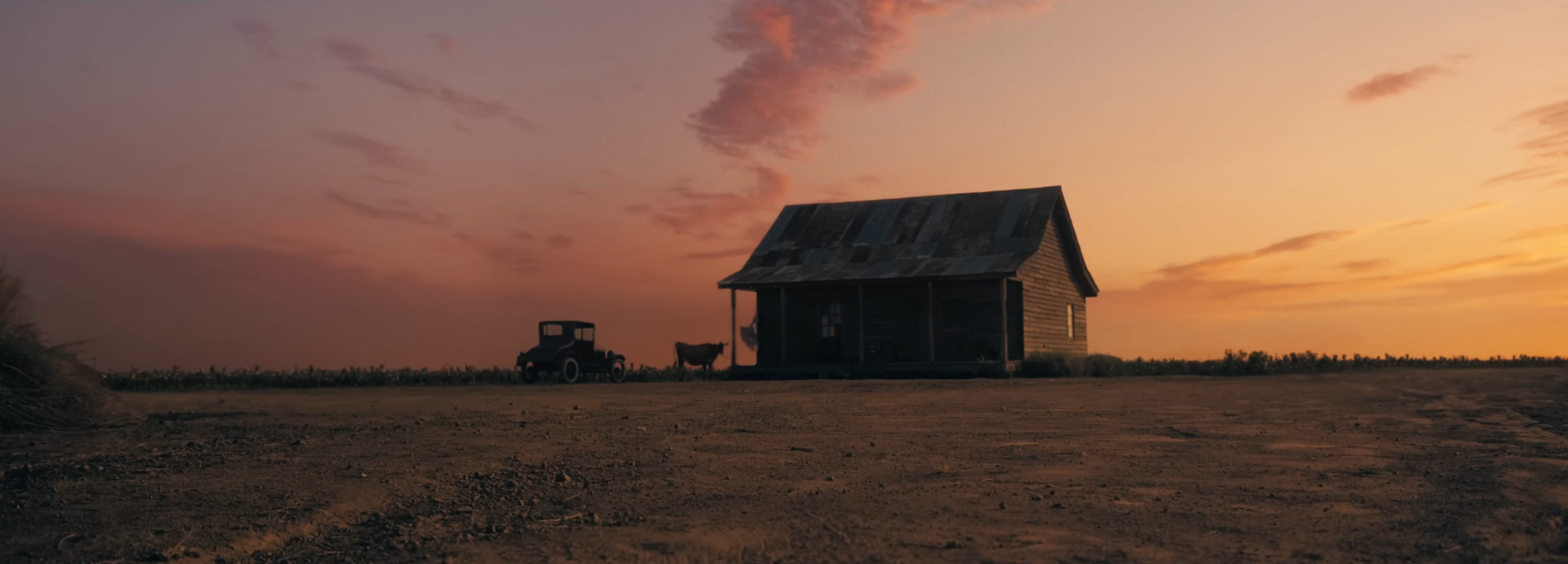
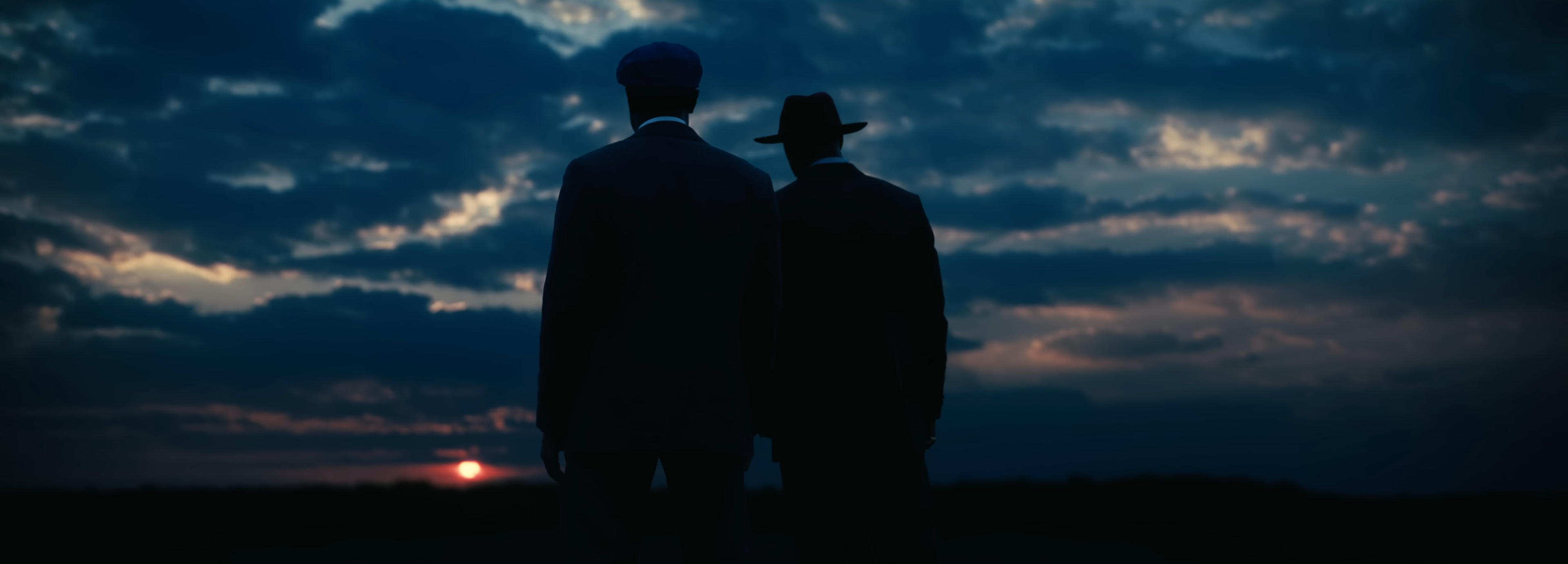
Sure enough, our climactic arrival at Smoke and Stack’s juke joint is more than a worthy payoff, heralded by the crescendo of Ludwig Göransson’s acoustic blues and its gradual layering of heavy rock instruments. Here, the golden lighting sinks in an ambient warmth, recreating the spirited atmosphere of a live concert as singer Pearline stomps, belts, and enraptures the audience with her dynamic stage presence.
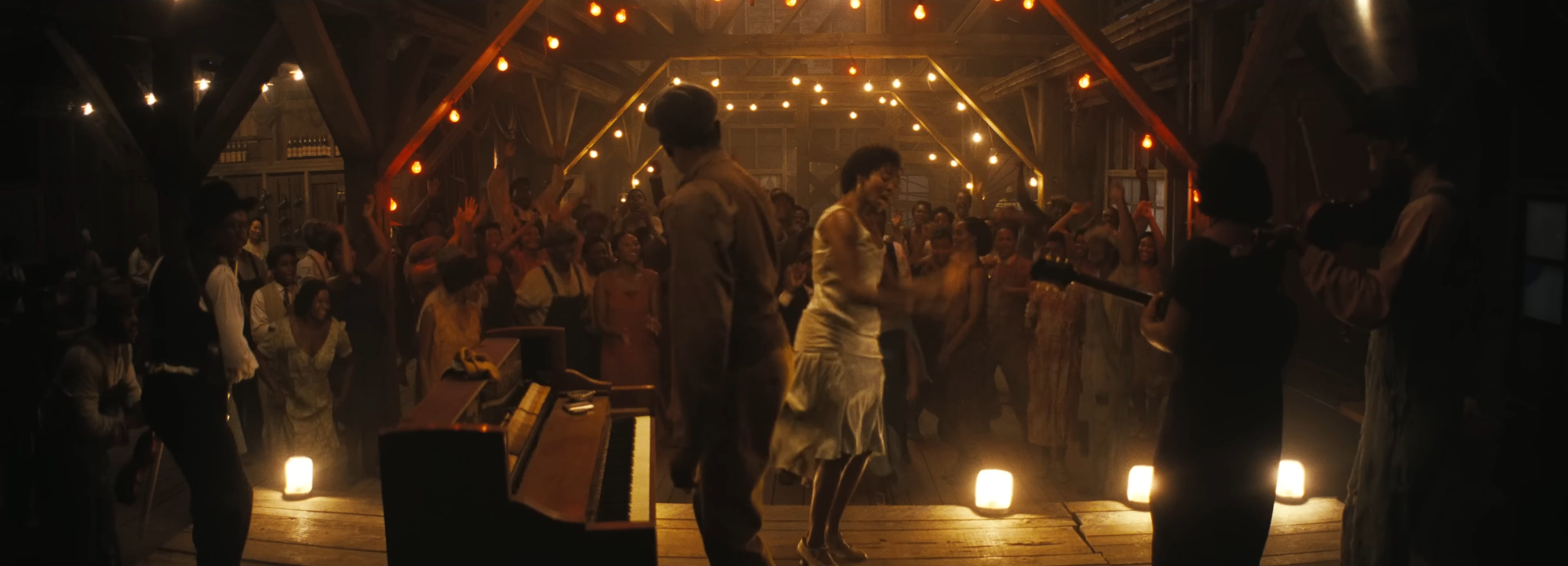
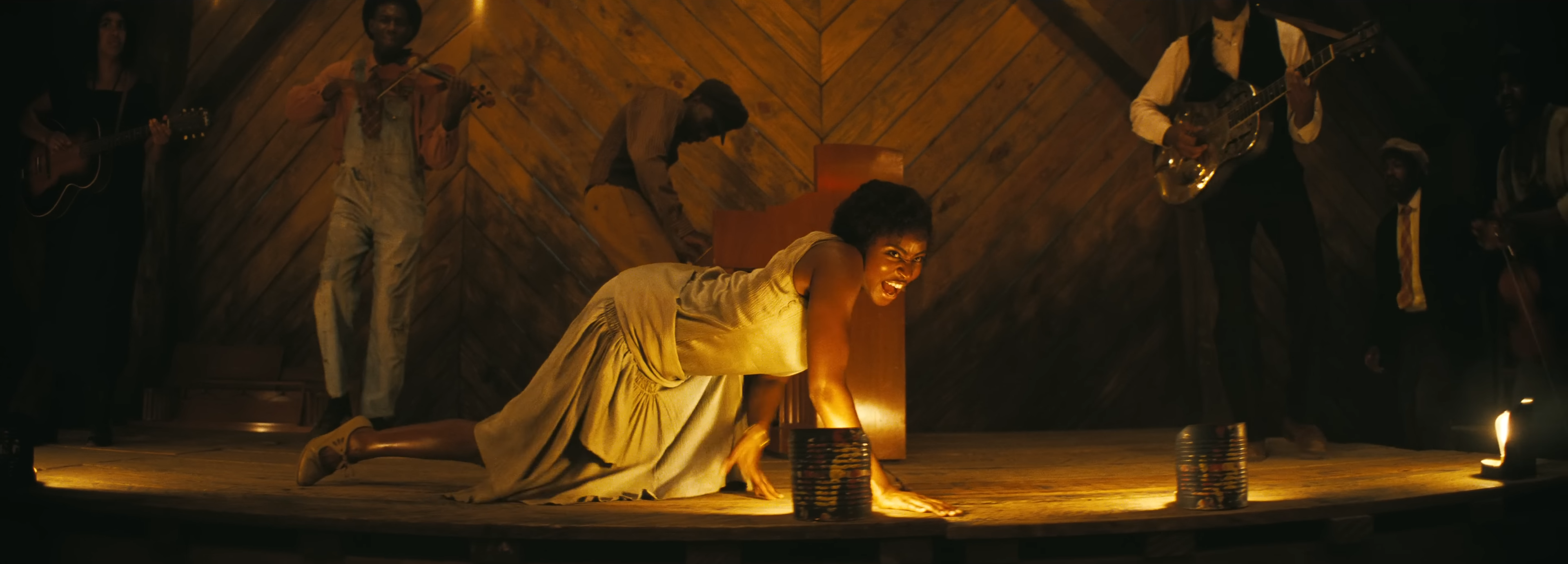
Equally astounding though is Göransson’s musical pivot at this point, ushered in with the unwelcome arrival of Remmick and his recently converted minions. There is a cold, shiny glint in their eyes as they approach the juke joint, seeking the invitation they require to enter. Their jaunty bluegrass tune comedically shatters the tension with the corniest possible rendition of ‘Pick Poor Robin Clean’, though once its incongruity settles, we recognise the menace in its soulless appropriation of a classic blues standard. Remmick’s later performance of Irish folk ballad ‘Rocky Road to Dublin’ is a far more sincere representation of the threat he poses, effectively clashing cultures through divergent musical traditions, and threatening the erasure of everything the juke joint represents. Never has a jig been so menacing as it is here, yet Jack O’Connell also imbues it with an impassioned longing, grasping at the remnants of a life he lost long ago and now seeks to revive through assimilation and bloodshed.
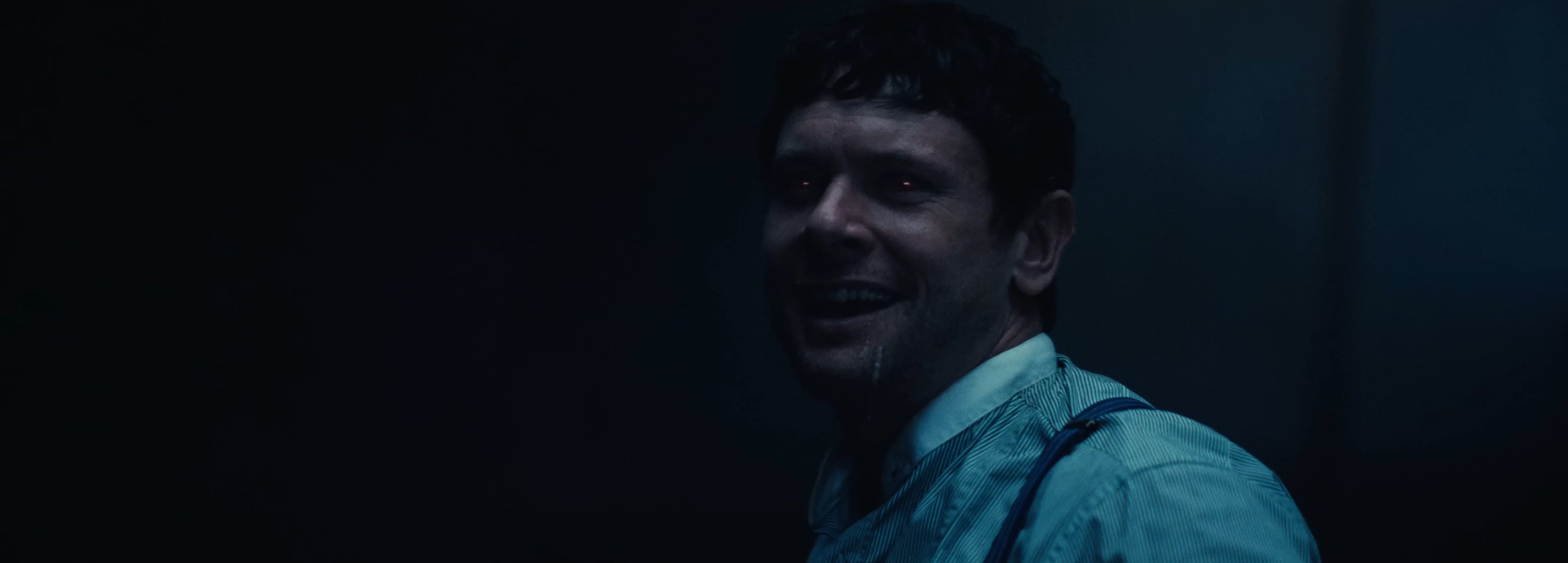
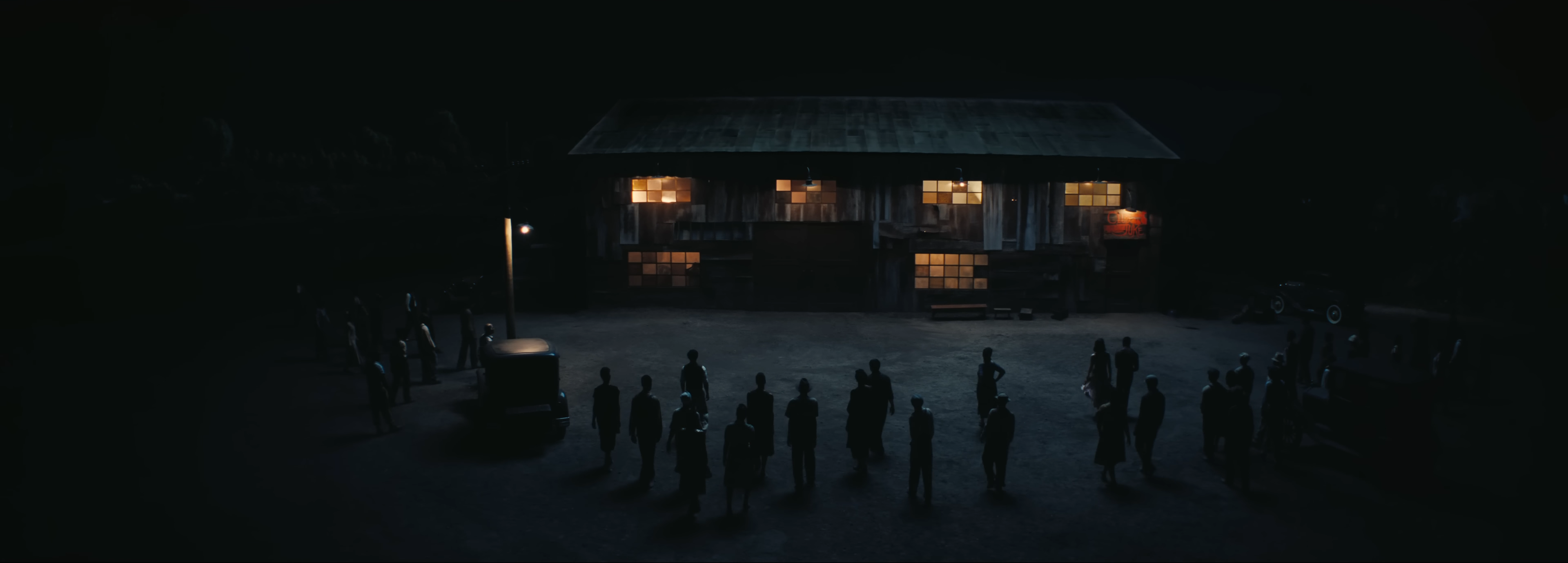
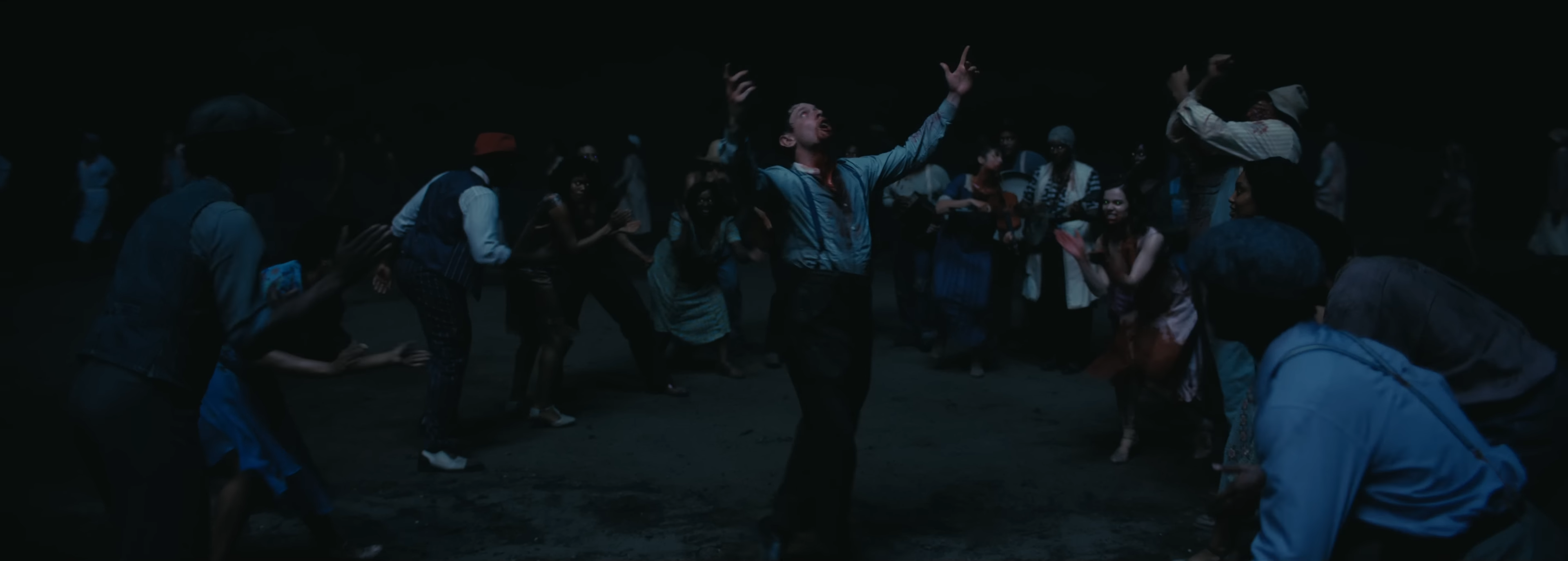
This use of music to represent the division and fusion of cultures weaves incredible formal creativity through Sinners, though Coogler continues to push its conflict further as he draws it into the heart of the film, fracturing Smoke and Stack’s intimate fraternal bond. This archetype of warring brothers reaches far back to the biblical story of Cain and Abel, and Carl Jung’s consideration of doppelgängers as manifestations of one’s inner darkness similarly resonates in Coogler’s vampiric doubles. Hostility and grief bleed through Jordan’s dual performances, but it is also through this split that we see traces of both emerge in each other. Just as humans carry incredible capacity to inflict violence, so too is there a surprising emotional depth to their monstrous counterparts, regretfully aching for reconnection to that which once made them truly alive.
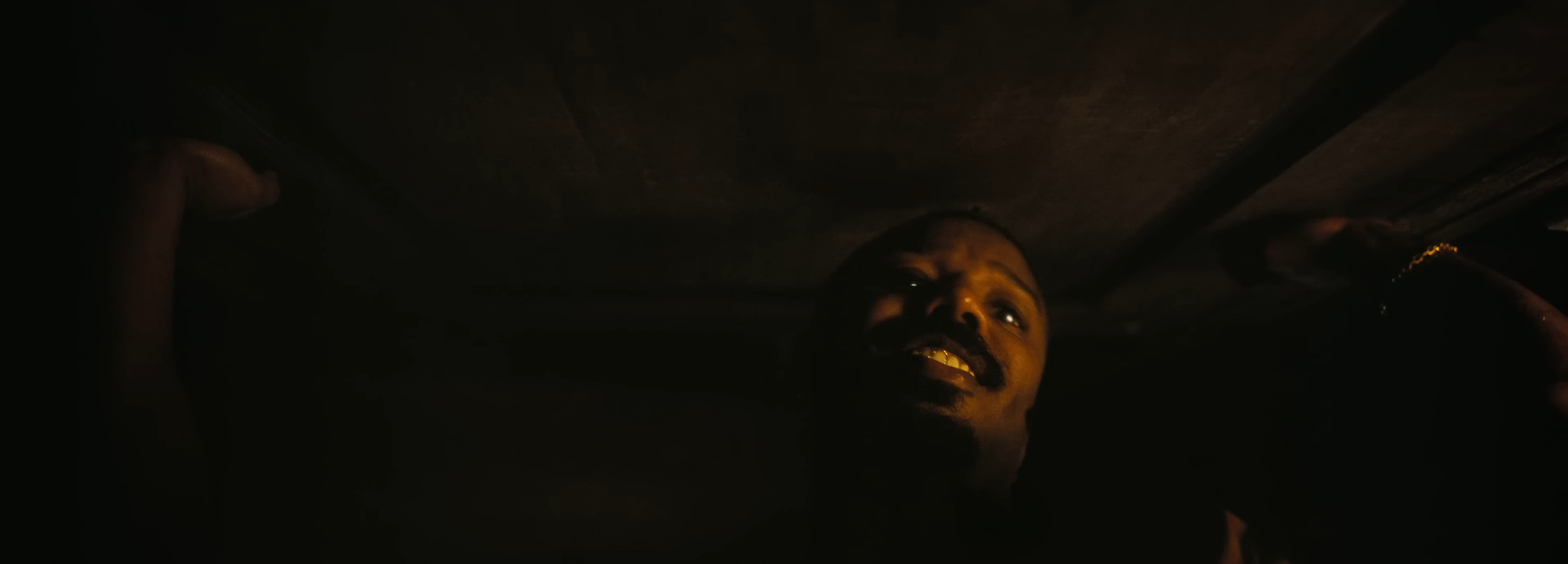
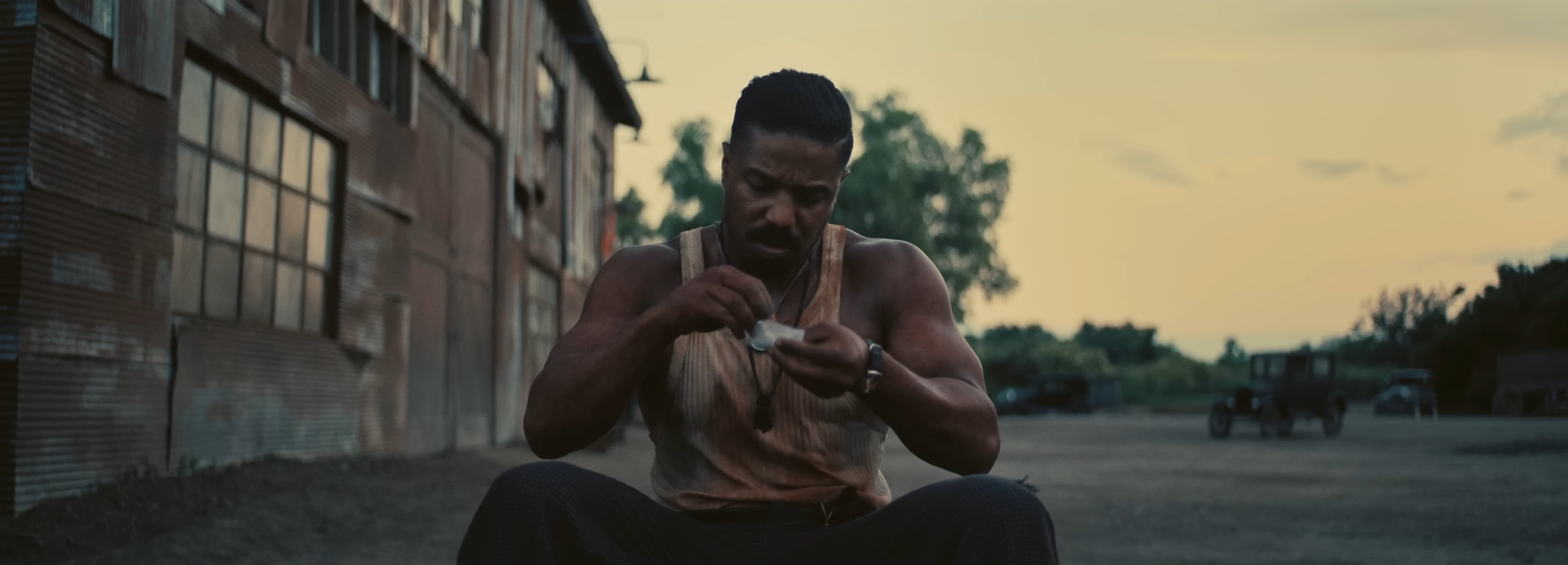
The mid-credits scene is not one to miss, as it is here where this pivotal recontextualisation takes places, offering sympathy to those who exchanged one freedom for another in the process of social conformity. For human and vampire survivors alike, that devastating night is remembered with nostalgic melancholy over what was both gained and lost, allowing a mutual understanding to flourish among those who went their separate ways. It is there in Coogler’s epic battle of preservation and assimilation that a timeless riff resonates between warring cultural ideals, and it is through their haunting harmonies that Sinners echoes a harrowing, historic struggle for community.
Sinners is currently playing in theatres.
